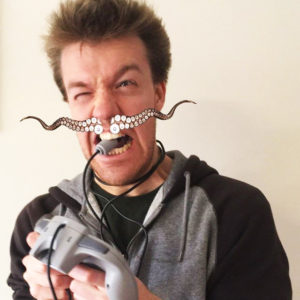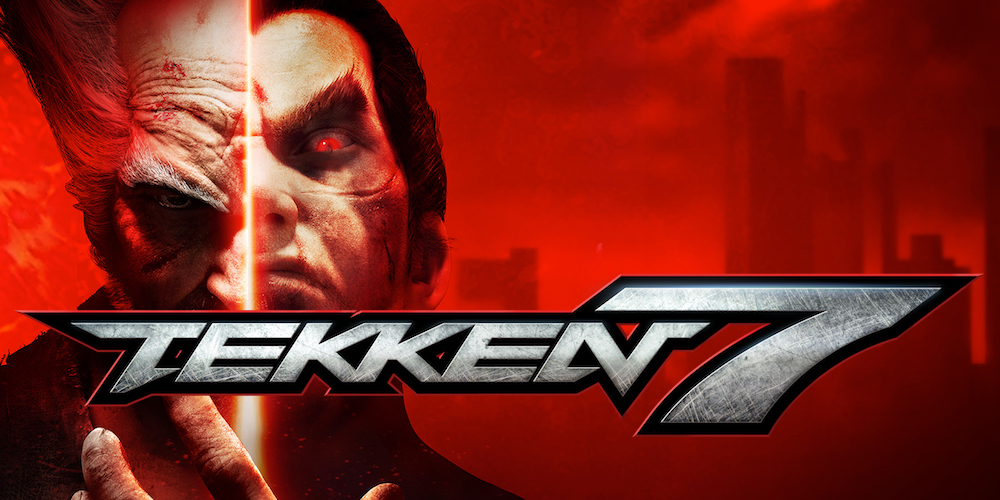
Time to grab the lion mask and put on your best bear costume; the Iron Fist Tournament is back in town! It’s been close to a decade since we’ve seen Heihachi’s mighty bald patch in our homes, but now that it’s brilliant radiance is back, it’s time to weigh in on Tekken 7. Because of this monumental occasion, I’ve enlisted the help of my fellow Tekken-worthy-haired writer, Dani Campbell, to help me pick apart the latest entry in the Tekken series. So, is the game any good? Well, yes, but the story sure as hell could have been better.
N: Tekken 7 marks the final chapter in the long lasting Mishima rivalry. After years of grudges and demon battles, Heihachi and Kazuya finally settle their feud once and for all, but, uh, you probably won’t care. Without trying to sound too cynical, the storytelling is worse than Hwoarang’s new costume. We see events through the eyes of a reporter, but his actions have so little bearing on the plot that his presence is almost superfluous. Moreover, the story itself has plot holes gaping open as far as Jin’s oversized fighting gloves can reach. Trust me; the story is truly terrible.

D: I think we can both agree that the main story is where Tekken 7 fell a little short. I enjoyed it, don’t get me wrong, but it was just a little bit too short. I would have been okay with a lacklustre narrative if they hadn’t advertised the story as the main focus of the game. The ongoing battle within the Mishima Zaibatsu clan was what was advertised, and I expected a good fight (and a good conclusion). While the build up was great, it felt rushed towards the end, as if the creators wanted to finish up this story quickly and go work on something else.
N: While the story sucks immense balls, the motivations behind each character are solid. The only motivation I needed for Lucky Chloe was that she wanted to be the very best pop idol on the planet. Kazuya hates Heihachi, Yoshimitsu seeks revenge and King’s gotta be top dog (or lion, as it were). These are adequate motivations for the Iron Fist Tournament, but you don’t get to see them in the main story because they’re hidden away in another story mode.
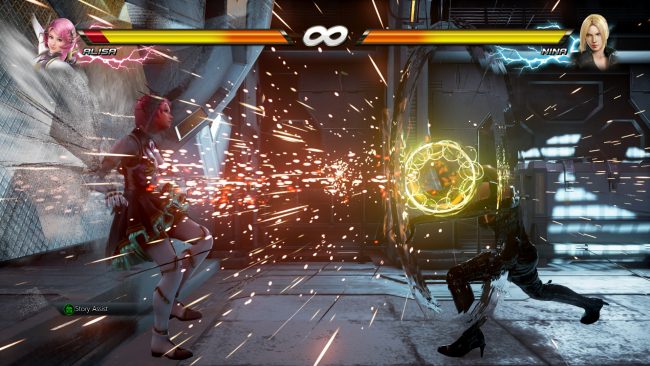
D: Character chapter fights were fun, and I enjoyed them more than the main story. The backstory to show what they were doing before Tekken 7 was a good way to catch up, especially for new characters like Lucky Chloe and Miguel. They were trying to keep the emotion of the stories light, and I think they did that well. A little comedy for each of the characters made them just that little bit more loveable (or hated depending on your point of view). As for the game, well, the game itself is still good ol’ Tekken!
N: Yes, that’s right, Tekken is still really good at being Tekken. Each button corresponds to each limb, there’s a heavy emphasis on movement and positioning, blah blah blah, it’s Tekken. After six main games and more spinoffs than Eddy’s move list, it’s hardly a surprise that the game is satisfying to play, but it’s good to remind the fans why the series has remained a titan of the fighting genre. I wouldn’t say there’s much new to the core game design, but there is one addition that’s got me feeling a rage unlike any other.
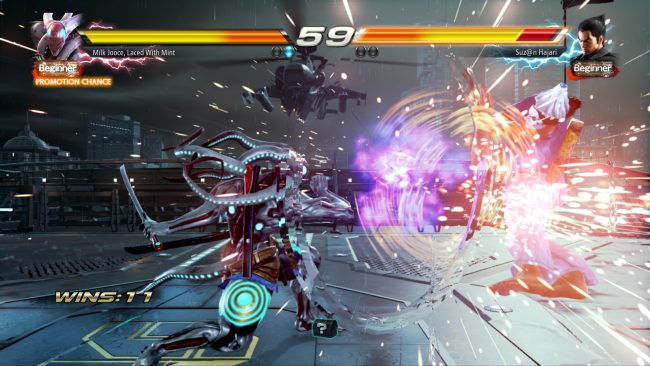
N: Tekken 6 introduced the Rage mechanic (do more damage on low health), but the latest instalment goes one step further. Rage Arts are super moves that can be performed when in Rage at the push of a single button. Now, I like Rage Arts, but I also don’t. These moves will shave off a third of your health bar, which is insane considering you only need to hit one button to pull it off… But why did the victim let it get through? A valid question, one that I’m struggling to come to terms with myself. After all, if you were going to lose, you were going to lose, right? I just can’t shake the feeling that Rage Arts artificially better bad players, but again, why would a good player let them through? On the less cyclical side, Rage Arts change the dynamic for the attacker from aggressive to defensive.
D: I love the defensive feel of this game. Being told to wait not only forces players to strategise but also have a chance of winning. As an admitted button masher, I don’t know how many times I’ve won because I’ve taken my time to observe the playing field and thought about what to do next. Having the Rage Arts can help in those moments of stress when both players are near death and possibly turn the battle around. Although, while waiting for an online match to start, it would help if we could learn the rest of the moves.
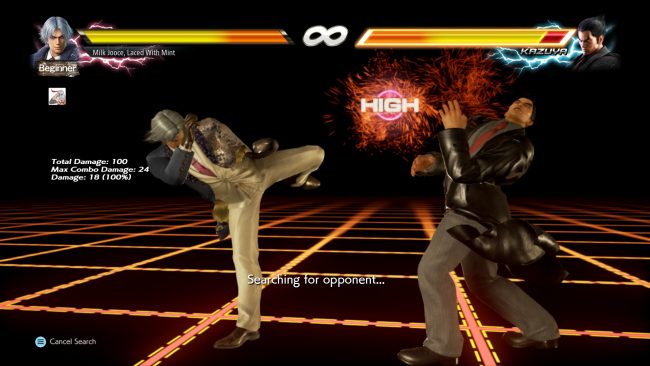
N: Ah, yes… The warm-up screen is the missed opportunity of missed opportunities. Whenever you go into online matchmaking, you’ll be put into an infinite room to warm-up your muscles on an unsuspecting CPU. The problem is that there are no options available in the warm-up screen other than leaving the matchmaking queue. Where is the move list? Where are my CPU AI? Where is anything – ANYTHING – that lets me learn while I wait? A small issue, perhaps, and a forgivable one when considering how well the matchmaking works.
N: I can say with absolute confidence that the matchmaking in the game has been some of the best I’ve ever experienced. Every single battle was a tight match that tested my (lacking) skills without setting me against EVO-level adversaries. Best of all, very few fights ended up with unplayable lag. Mind you, when it got bad, it came down to if you were on God’s good side whether the game would start lagging or not. Still, the online performance has been delightful, much like the framerate on PC!
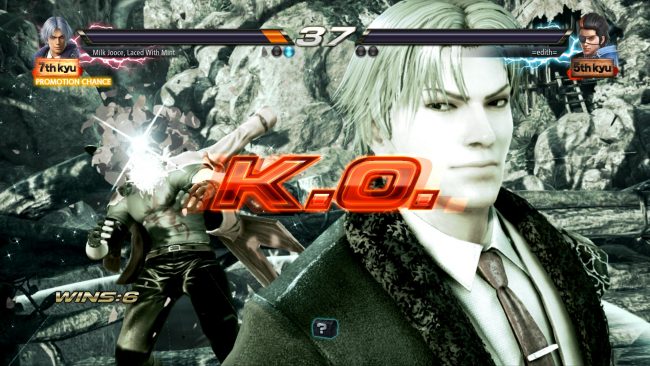
N: Tekken 7 marks the first main entry in the franchise to hit PCs. Ever. It’s a big moment, and lo and behold, the game doesn’t run like an overweight badger. Controls are tight, framerates are deliciously high, and even though the options do leave much to be desired, it’s a great experience on PC. As for Tekken’s home console, though, well… I’ll hand over to Dani to judge such peasantry.
D: Having an original 500GB PS4, the game’s framerate slowed down and chugged at points. Loading screens were what killed it, and often the animation was way behind the “get ready for the next battle” announcement. The performance wasn’t too much of an issue during fights, however, with framerate dips kept to a minimum. Button presses didn’t seem delayed either, and unlike previous games, there weren’t many moments where you would go to attack and characters’ limbs would clip through others. Crossing over to multiplayer, this consistency seemed to stay, and for what internet Australia has, there appeared to be little to no lag (given you found someone with 4 bars and above).
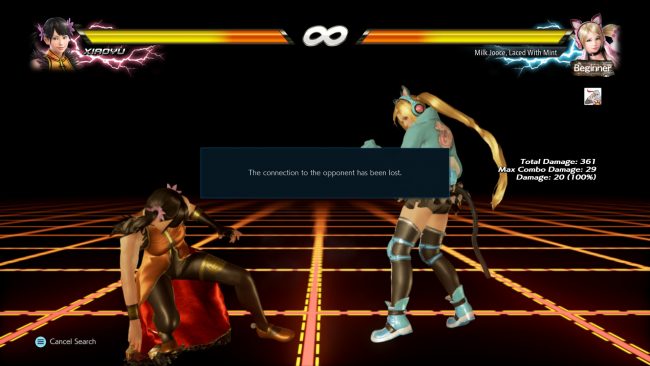
D: Connection quality was a problem, limiting the number of matches I could feasibly join. I was able to drink a cup of coffee comfortably while waiting for someone on the Asia/Oceania servers to connect. The longest I had to wait was ~5-6 minutes, which was long enough to wonder if anyone else was playing with 4 bars or above. Having the option to choose the connection quality was a lifesaver, but if the delay meant a smooth connection, I was willing to wait… Usually. I don’t think I’ve played a game that gives you the option to sacrifice connection quality to get games quicker, so it’s good to see that kind of freedom for the player.
N: Speaking of player choice, Tekken’s lineup hasn’t gotten any smaller since the last game. Whether you want to play as a boxer, a robot girl or a frikkin’ bear, Tekken 7 has a lavish cast that will indulge most anyone’s fighting tastes. What’s impressive is how individual each character feels to play. Only Kazumi, Heihachi and Kazuya are similar, but they are far from the same character, and with over 20 characters in the lineup, that’s a lot of variety!
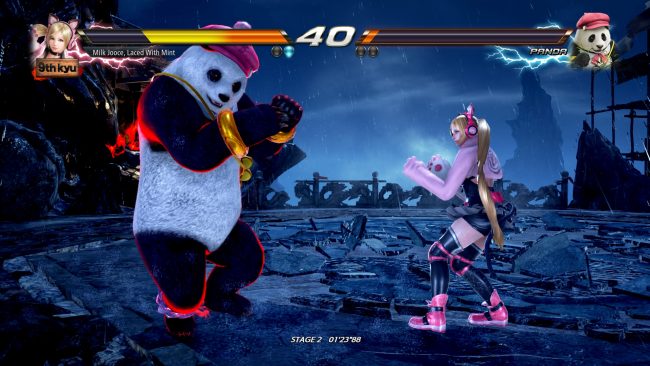
D: The Tekken 7 roster contains both new and old characters, which I think both new and old players will like. The characters all have different fighting styles, and even Akuma fits in somehow. But with that said, I do not like one bit that he is now canonically part of the story. It’s not that I don’t like new characters; just look at Claudio, a new addition to the franchise, who has quickly become a favourite of mine. But Akuma!? Someone from another well-established franchise is just something that doesn’t seem to fit. Whether Bandai Namco is planning on keeping him in for future games, I don’t like that it’s a character already known, already established in another franchise brought over. But he does look good.
D: The game is stunning in motion. Character designs, while simple, have a clean, fresh look to them. Customisation has also blown out to ridiculous proportions, with insane numbers of costumes and props to decorate Tekken characters. This expanded customisation also brings the clear option to choose between character skins, so no more having to google which button loads Nina’s alternate skin. There is a clear line of text saying “press square to change skins”, which is a godsend, but regardless of what skins you choose, it’ll look damn good.
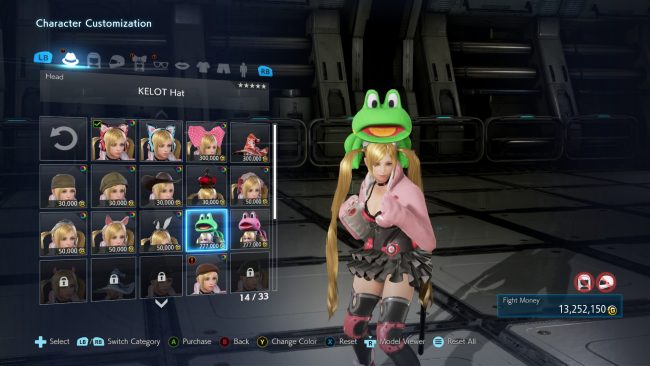
N: Okay, so, the graphics are good, that’s out of the way. The good-lookingness of the game isn’t what I’m concerned with, though, since I care about how well information is conveyed. Thankfully, Tekken 7 does it very well, as per usual Tekken standards. If you successfully block, you get a different kind of particle effect than if your skull implodes. Unblockables are made very apparent to the player, and the UI is crisper than that one chip left in the deep fryer overnight. Readability of most attacks is subtle, though, so while the game is easy to pick up, it’s challenging to master. Just how Tekken should be.
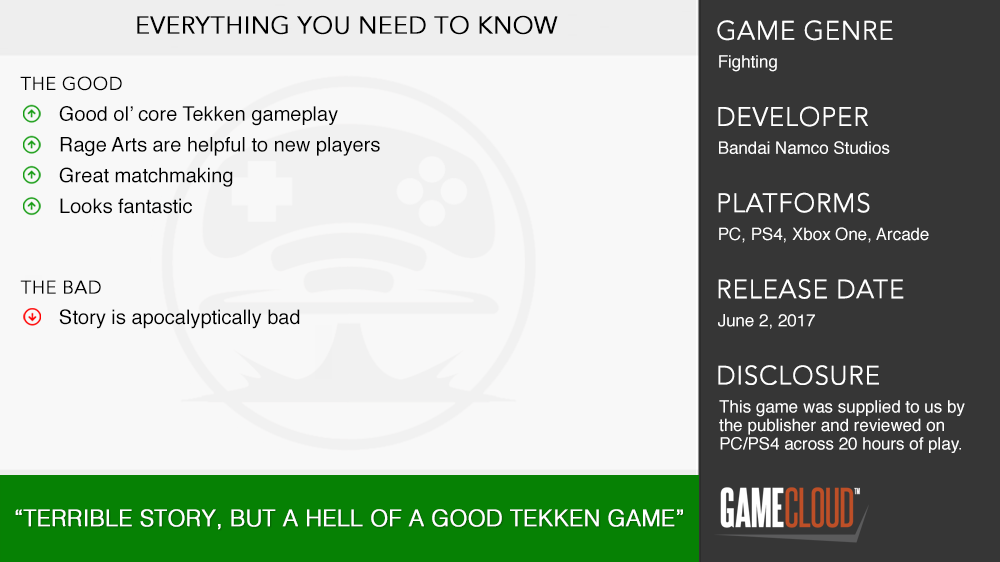
If we look past the god awful story, Tekken 7 is another solid entry in the saga. The core gameplay is as satisfying as ever, and Rage Arts help make the game less intimidating for the poor noobs. With a wide array of memorable characters and enough depth to keep you memorising moves for years to come, Tekken 7 lives up to its namesake. Now, if you’ll excuse me, I’m preparing for my next battle.

